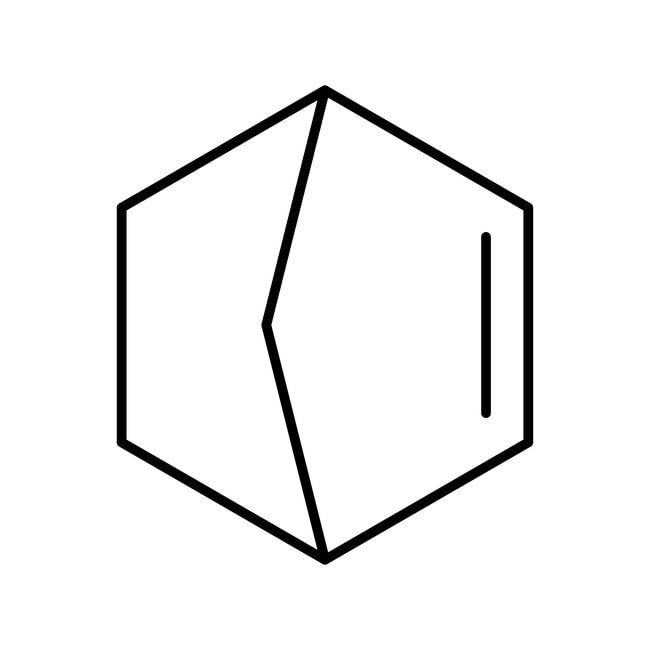Search Thermo Fisher Scientific
Norbornene, 99%, Thermo Scientific Chemicals



Norbornene, 99%, Thermo Scientific Chemicals
Chemical Identifiers
Specifications
Description
This Thermo Scientific Chemicals brand product was originally part of the Alfa Aesar product portfolio. Some documentation and label information may refer to the legacy brand. The original Alfa Aesar product / item code or SKU reference has not changed as a part of the brand transition to Thermo Scientific Chemicals.
Norbornene is used as a monomer and as an intermediate in organic synthesis. It is also used to prepare pharmaceutical intermediates and specialty fragrances. It reacts with ethylene to get cyclic olefin copolymer. Further, it is used in transition metal catalysis to affect migration of electrophilic transition metals. It acts as a monomer in ring-opening metathesis polymerizations with the Grubbs′ catalyst. Its polymer, polynorbornene is used in the rubber industry for anti-vibration, anti-impact in personal protective equipment and grip improvement in toy tires, racing tires and transmission system.
Solubility
Soluble in ethanol, ether and most organic solvents. Insoluble in water.
Notes
Incompatible with strong oxidizing agents.
Figures
Documents & Downloads
Certificates
Frequently asked questions (FAQs)
Citations & References
Safety and Handling
Classification of the substance or mixture
CLP classification - Regulation(EC) No 1272/2008
Label Elements
Signal Word
Danger
Hazard Statements
H304 - May be fatal if swallowed and enters airways
H319 - Causes serious eye irritation
H336 - May cause drowsiness or dizziness
H361 - Suspected of damaging fertility or the unborn child
H411 - Toxic to aquatic life with long lasting effects
Physical Hazards
H228 - Flammable solid
Precautionary Statements
P210 - Keep away from heat, hot surfaces, sparks, open flames and other ignition sources. No smoking
P280 - Wear protective gloves/protective clothing/eye protection/face protection
P301 + P310 - IF SWALLOWED: Immediately call a POISON CENTER or doctor/physician
P304 + P340 - IF INHALED: Remove person to fresh air and keep comfortable for breathing
P331 - Do NOT induce vomiting
P337 + P313 - If eye irritation persists: Get medical advice/attention